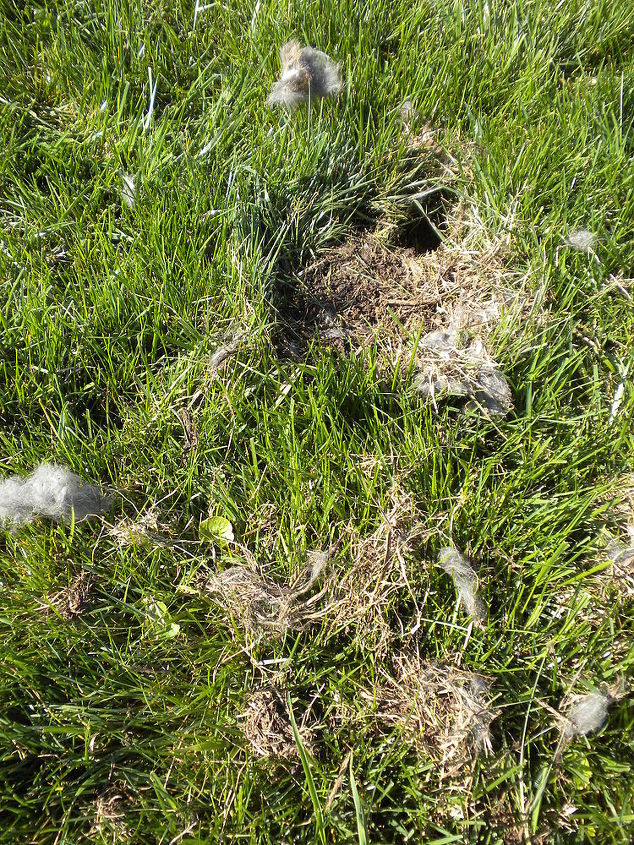What’s the easiest way to get rid of kudzu? I’ve tried herbicides

Ork
Related Discussions
GNATS - How to get rid of them?
Somehow my house and garden got tiny gnats that killed my fuchsia plant and fly everywhere. I have tried ALL the Web recommendations - soap and oil dishes, sand in th... See more
Marigolds growing! Should I pinch the buds?
My marigold plants are growing. I heard that pinching the buds until Autumn will allow them to grow without killing the plant. Is this true?
Growing garlic
Growing our first garlic, should we wait until the leaves are drying out before we pick it? Husband picked first one today along with our first potatoes.
How to keep mice out of your garden?
Hi everyone, I have mice in my garden destroying my vegetables and I have also noticed them in the barn and shed. Please can someone tell me how to prevent them from ... See more
What's the best flower/plant to grow in Texas?
I know that opinions vary, but what's your opinion?!I have great luck w Rosemary plants. Green all year long.
Can someone tell me what kind of animal this was in my yard?
I thought maybe a rabbit was burrowing in my yard, but it's almost dead center of my lawn (not a very smart rabbit). The hole is not very deep, and I replanted it onc... See more
Is Creeping Charlie in your lawn a good thing or a bad thing?
Is there a sure-fire way to get rid of Creeping Charley?





`Here are several methods:
https://www.wikihow.com/Kill-Kudzu
Personally I would prefer not to use an herbicide, that stuff goes into the drinking water through runoff.
The manual method of cutting, mowing, and digging up roots seems the most labor intensive, yet in the long run it can be controlled and gotten rid of.
It's a crossroads between environmentally safe and manual labor.
Hello. Heres a link that might be helpful
https://www.in.gov/dnr/entomology/files/ep-KudzuFactSheet2008.pdf
here is info
https://www.youtube.com/watch?v=BshwUhQFkTQ
https://www.gardeningknowhow.com/plant-problems/weeds/kudzu-information-and-removal.htm
Crown removal
Destroying the full underground system, which can be extremely large and deep, is not necessary for successful long-term control of kudzu. Killing or removing the kudzu root crown[37] and all rooting runners is sufficient. The root crown is a fibrous knob of tissue that sits on top of the roots. Crowns form from multiple vine nodes that root to the ground, and range from pea- to basketball-sized. [37] The age of the crowns is correlated to how deep they are in the ground. Nodes and crowns are the source of all kudzu vines, and roots cannot produce vines. If any portion of a root crown remains after attempted removal, the kudzu plant may still grow back.
Mechanical methods of control involve cutting off crowns from roots, usually just below ground level. This immediately kills the plant. Cutting off the above-ground vines is not sufficient for an immediate kill. Destroying all removed crown material is necessary. Buried crowns can regenerate into healthy kudzu. Transporting crowns in soil removed from a kudzu infestation is one common way that kudzu unexpectedly spreads and shows up in new locations.
Close mowing every week, regular heavy grazing for many successive years, or repeated cultivation may be effective, as this serves to deplete root reserves. [37] If done in the spring, cutting off vines must be repeated. Regrowth appears to exhaust the plant's stored carbohydrate reserves. Harvested kudzu can be fed to livestock, burned, or composted.
In the United States, the city of Chattanooga, Tennessee undertook a trial program in 2010 using goats and llamas to graze on the plant. Similar efforts to reduce widespread nuisance kudzu growth have also been undertaken in the cities of Winston-Salem, North Carolina[38] and Tallahassee, Florida. [39]
Prescribed burning is used on old extensive infestations to remove vegetative cover and promote seed germination for removal or treatment. While fire is not an effective way to kill kudzu, [37] equipment, such as a skid loader, can later remove crowns and kill kudzu with minimal disturbance or erosion of soil. [37][40]
Herbicide[ edit]A systemic herbicide, for example, glyphosate, [41] triclopyr, [41] or picloram, [42] can be applied directly on cut stems, which is an effective means of transporting the herbicide into the kudzu's extensive root system. [43] Herbicides can be used after other methods of control, such as mowing, grazing, or burning, which can allow for an easier application of the chemical to the weakened plants. [44] In large-scale forestry infestations, soil-active herbicides have been shown to be highly effective. [43]
After initial herbicidal treatment, follow-up treatments and monitoring are usually necessary, depending on how long the kudzu has been growing in an area. Up to 10 years of supervision may be needed after the initial chemical placement to make sure the plant does not return. [45]
Fungi[ edit]Since 1998, the United States Department of Agriculture, Agricultural Research Service (ARS) has experimented with using the fungus Myrothecium verrucaria as a biologically based herbicide against kudzu. [30] A diacetylverrucarol spray based on M. verrucaria works under a variety of conditions (including the absence of dew), causes minimal injury to many of the other woody plants in kudzu-infested habitats, and takes effect quickly enough that kudzu treated with it in the morning starts showing evidence of damage by midafternoon. [30] Initial formulations of the herbicide produced toxic levels of other trichothecenes as byproducts, though the ARS discovered that growing M. verrucaria in a fermenter on a liquid diet (instead of a solid) limited or eliminated the problem. [30]
You will have to destroy the root. There is only 1 herbicide that I am aware of that will work is RM43. If you have access to a way to dig up the root ball, that is the best way.
We have found that it did not grow back in the area behind our house where our cattle graze but they ate it consistently to the ground last summer. I'm clueless how to duplicate that process though.
Hello, hope this helps you out,
https://conservingcarolina.org/get-rid-of-kudzu/#:~:text=If%20the%20kudzu%20is%20growing,on%20to%20the%20cut%20surface.